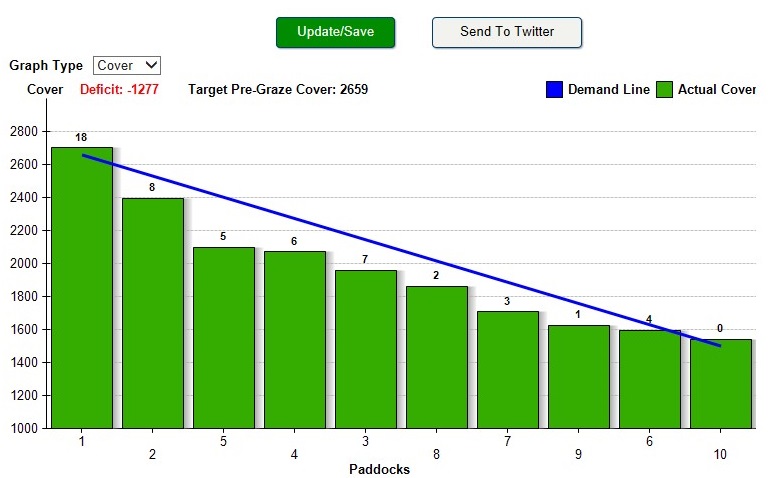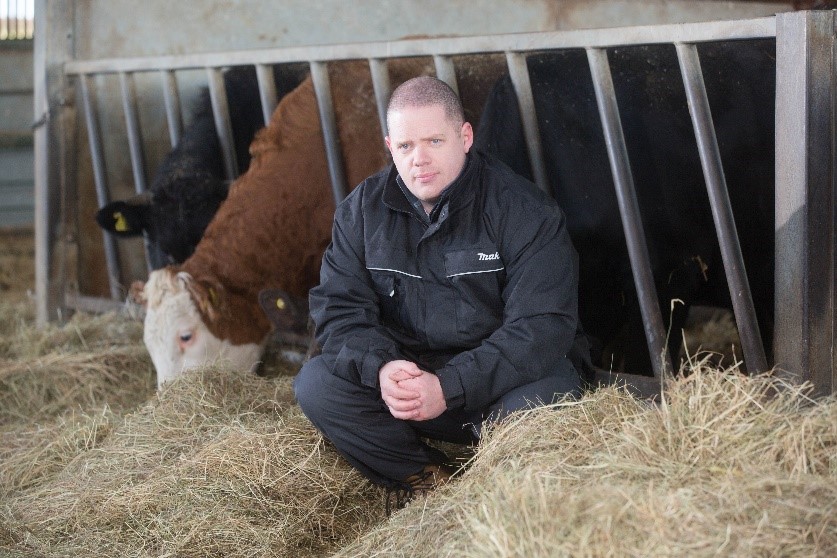- Home
- Knowledge library
- Managing pasture shortage in rotational grazing systems for cattle
Managing pasture shortage in rotational grazing systems for cattle
Welcome to the rotational grazing system series for suckler producers. In this section we explore how to manage a grass deficit.
The same principle in terms of measuring grass covers and inputting the data into a spreadsheet applies to deficits. A deficit is shown in the AgriNet grazing wedge below.

AgriNet grazing wedge showing a deficit
Once the grazing wedge has fallen below the livestock demand line, it is important to take action to help build covers again. This can be done in several ways:
- Introduce supplements (silage, concentrates) – this will reduce the demand from grass and help grass cover recover
- Introduce more paddocks to extend the rotation and allow covers to recover (these could be extra grazing fields or fields which have been silage)
- Utilise standing hay – if you have shut out fields for silage and growth has reduced significantly, silage fields with large covers can be brought back into the rotation to be grazed (this can be done by strip grazing or pre-mowing an area and allowing the cattle to graze the cut grass). Grazing is cheaper than making silage and feeding it back to the cattle
- At the end of the year, look to house a proportion of the animals earlier, or in the spring rehouse some livestock
Case study : Mark Jelley - Managing a grass deficit
Find out how Mark managed his cattle during a period of 58 days without rain.
Mark Jelley, one of our Beef and Lamb strategic farmers, set up a rotational grazing system in April 2018. The first rotation worked well, with fields being fully utilised. However, from the end of May, the farm had 58 days without rain and although 1 inch of rain fell in August, the dry spell continued into September.
Mark used a combination of methods to manage the resulting grass deficit. Regular weighing showed a group of 16-month-old continental cross heifers growing well into July. However, as the drought persisted, growth rates stalled in August and so, for a short period, hay baled for winter was fed to try to take pressure off the pasture. With no sign of a return to grass growth the heifers were housed two months early in September.

Suckler cows benefited from the move to rotational grazing and their understanding of electric fencing became particularly useful. As the planned rotation stalled, cows and calves were strip grazed onto a standing hay crop, giving excellent utilisation. Fence training also allowed grazing of some arable grass margins and a conservation area before some of the calves were weaned a month earlier than usual to reduce cow demand.
Managed grazing greatly improved utilisation of grass across the farm and Mark commented that the cattle were a lot less stressed too as they knew they’d have access to fresh grazing each morning.
Topics:
Sectors:
Tags:


